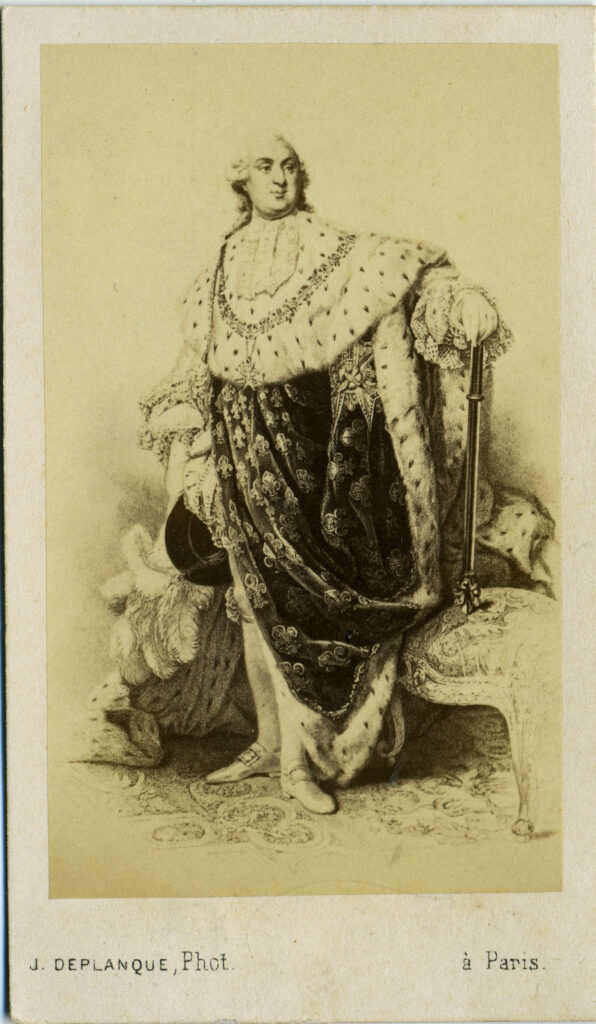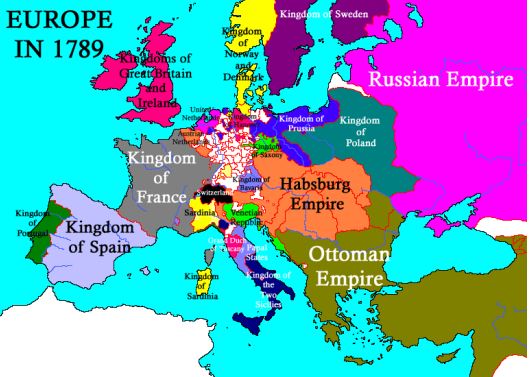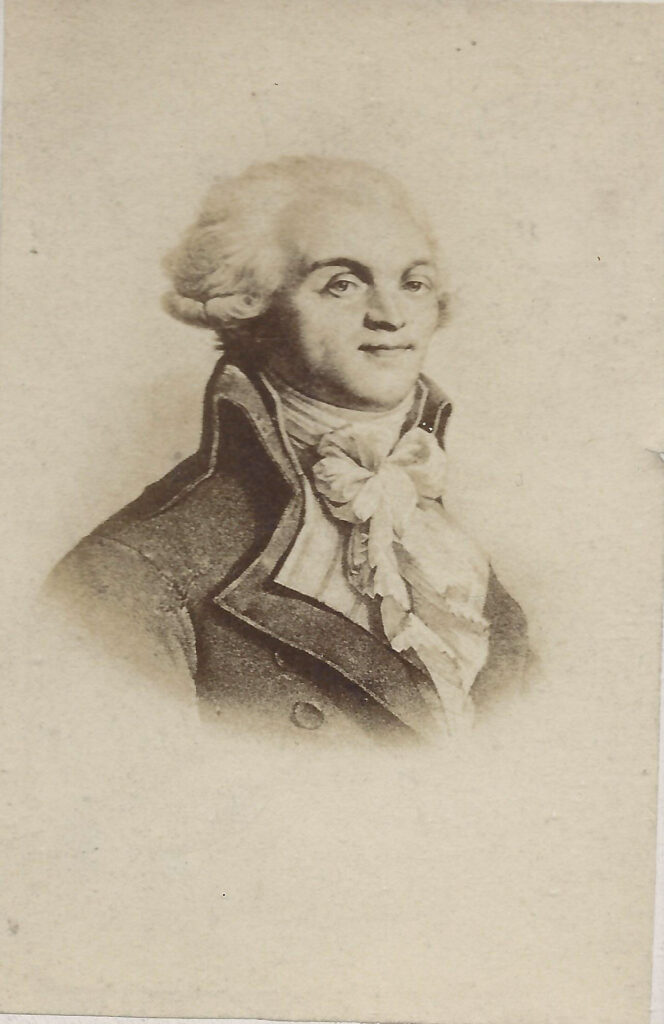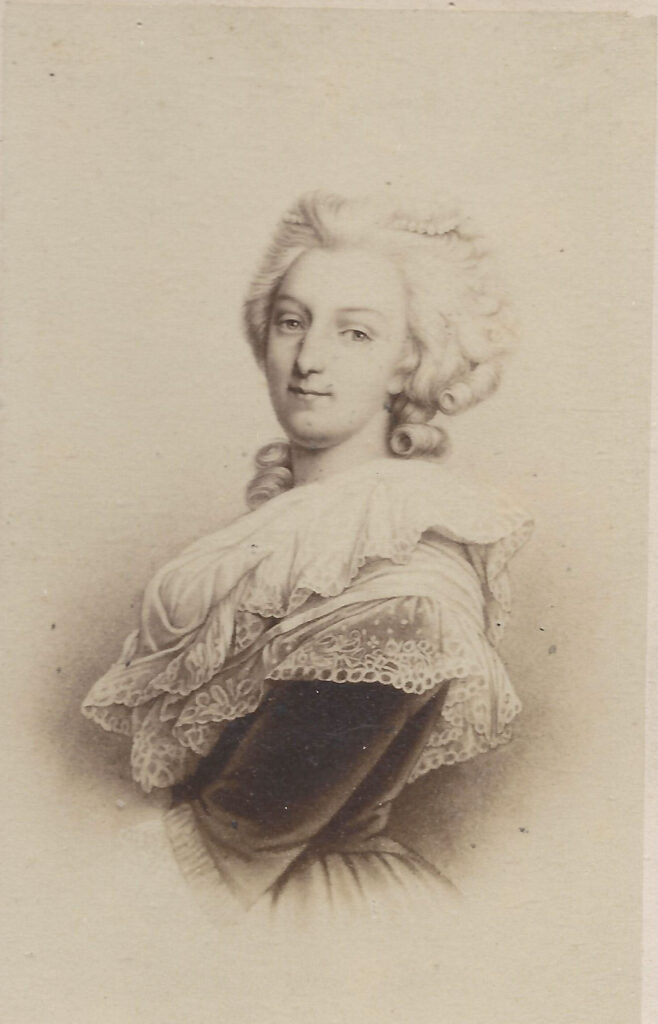Section #2 - A new Constitution is adopted and government operations start up
Chapter 16: The French Revolution Overthrows Louis XVI
January 21, 1793
King Louis XVI Is Guillotined And Robespierre Takes Power

From the moment George Washington begins his presidency, global events are about to be dictated by the revolution under way in France.
King Louis XVI’s authority vanishes on July 14, 1789, when the Paris commoners assault Bastille Prison in search of gunpowder to resist local military intervention. But the expectation is for a new government styled after England’s combination of Parliament and a constitutional monarchy.
Despite this prospect, other European monarchs remain deeply shaken by events in Paris.

To the west, the Kingdom of Spain is ruled by Charles IV.
To the east of France lies the Habsburg/Holy Roman/Austrian Empire, ruled by Leopold II (brother of Louie’s wife, Queen Marie Antoinette), comprising territories running from Holland, Belgium, the 300+ middle states of Germany, Austria, Hungary and Croatia/Bosnia.
To the northeast is the Kingdom of Prussia, which stretches from the capital in Berlin along the Baltic Sea, and is ruled by the hawkish monarch, Frederick II.
On August 27, 1791, Leopold II and Frederick I decide to warn the French revolutionaries to not harm the royal family. At first these threats simply exacerbate popular contempt for Louis.
But then the threats grow more dire. On April 20, 1792, the French National Assembly declares war on Leopold and the Habsburgs, and begins an invasion, which quickly draws Prussia into the conflict.
When early battles go against France, a second revolution – called the “Reign of Terror” – sweeps the nation.

It is led by Maximillien Robespierre and far-left groups (Jacobins and
Sans-Coulettes) who envision a “utopian society” run by the direct
voice of the common man and marked by increased wages for all, an end to food shortages, and punishment meted out to nobility.
On August 10, 1792, Parisian’s attack the King’s palace and place him and his family under house arrest. He is tried before the National Convention, convicted of treason, and sentenced to death. On January 21, 1793, Louis XVI, is driven through Paris in his carriage, arriving at the Place de la Revolution around 10AM. The final act is described by the High Executioner, Charles-Henri Sanson, who oversees some 3,000 executions in his day, and becomes known as “Monsieur de Paris” for his exploits.
Arriving at the foot of the guillotine, Louis XVI looked for a moment at the instruments of his execution and asked Sanson why the drums had stopped beating. He came forward to speak, but there were shouts to the executioners to get on with their work. As he was strapped down, he exclaimed “My people, I die innocent!” Then, turning towards his executioners, Louis XVI declared “Gentlemen, I am innocent of everything of which I am accused. I hope that my blood may cement the good fortune of the French.” The blade fell. It was 10:22 am. One of the assistants of Sanson showed the head of Louis XVI to the people, whereupon a huge cry of “Vive la Nation! Vive la République!” arose and an artillery salute rang out which reached the ears of the imprisoned Royal family.
With the King now dead and war in progress, pressure rises on the National Convention to take charge of the nation’s destiny. This will involve a new battle between the bourgeoisie (middle class) and the proletariat (lower classes).
Robespierre steps up to the challenge as head of the Committee of Public Safety. He calls on France to create a “Republic of Virtue,” run by the common man, and based on concepts laid out by Rousseau.
Included here was the “Cult of the Supreme Being.”
Is it not He who decreed for all peoples liberty, good faith and justice? He did not give us priests to harness us to the chariots of kings and to give us examples of baseness, pride, perfidy, avarice, debauchery and falsehood. He created men to help each other, to love each other, to attain happiness by way of virtue.
Anyone standing in the way of Robespierre’s vision needs be dealt with quickly and harshly – and roughly 16,000 “aristos” or other enemies are publicly guillotined to purify the nation.
Included here, on October 16, 1793 is Louis’ wife, Marie Antoinette.
The French Revolution: Key Events – 1789-1793
| 1789 | Financial crisis over cost of American war triggers increased taxation |
| Troops put down riots over low wages and food shortages | |
| Citizens storm Bastille (July 14), symbol of monarchy | |
| Great Fear begins, peasants revolt against feudalism and aristos | |
| Assembly adopts Lafayette’s Declaration of the Rights of Man | |
| 1790 | Nobility abolished by National Assembly |
| 1791 | Lafayette orders arrest of 400 aristocrats |
| Massive slave revolt in French colony of Haiti | |
| 1792 | France declares war on Leopold II’s Habsburg monarchy (April 20) |
| Frederick II and the Kingdom of Prussia joins Leopold’s side | |
| Tuileries Palace stormed and Louis XVI imprisoned | |
| 1793 | Louis Capet XVI is guillotined (Jan 21) |
| Jacobin Party and Robespierre take control of the government | |
| France declares war on Britain and Holland (Feb 1) | |
| France declares war on Spain (March 7) | |
| Girondist (moderate) faction expelled from National Assembly | |
| Robespierre’s Reign of Terror begins (September 5) | |
| Marie Antoinette guillotined (Oct 16) |
1789 And Forward
Sidebar: Madame Marie Tussard’s Death Masks Of The King And Queen

Having just killed their King and Queen, the French decide to immortalize both through the ancient practice of creating death masks. This involves molding a wet plaster cast over the head of the deceased, allowing it to dry, and then removing and reassembling the front and back into a lifelike representation. The famed “golden death mask” of the 18 year old King Tutankhamen dates the art as far back as the Egyptians.
The National Convention calls upon one Marie Tussaud (1760-1851) to create the death masks.
Madame Tussaud is thirty years old when King Louis is guillotined. She has learned wax sculpture from Dr. Phillipe Curtius, a medical man who uses the art mainly to study and teach anatomy. In 1765, however, Curtius opens a “portrait museum” in Paris, featuring wax figures of famous people.
By the 1789 Revolution, Marie Tussaud had already created waxwork representations of the French philosopher, Voltaire, and the American diplomat and inventor, Ben Franklin. Her work is also embraced by the Royal family, and exhibited at the Palais Royal.
This connection to nobility almost leads to her own death, as the Reign of Terror sweeps up its victims. Her head is shaved and she awaits transfer to the scaffold before a friend of Curtius gains her release.
Once free, she is called upon to make death masks from the severed heads of the King and Queen. Her memoirs are emotionally circumspect about this task, and her work, in this case, is never put on public display.
In the years ahead, Madame Tussaud continues to “capture” many famous personalities of her era. She assists Curtius in creating tableaux, using lifelike wax sculptures to memorialize events, and displaying these in “pay-to-visit” galleries.
In effect, these figures and tableaux serve as precursors to a coming age of photography and film.
When Curtius dies in 1794, she inherits his collection, and in 1804 she moves to London, where she remains until her death at 88 years of age. While there, she and her son establish “Madame Tussaud’s Waxworks Museum,” a popular attraction located on Baker Street. The establishment stays in her family’s hands over many generations, and remains open to the present.